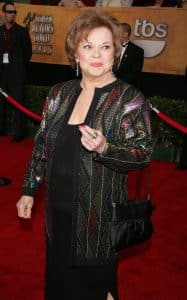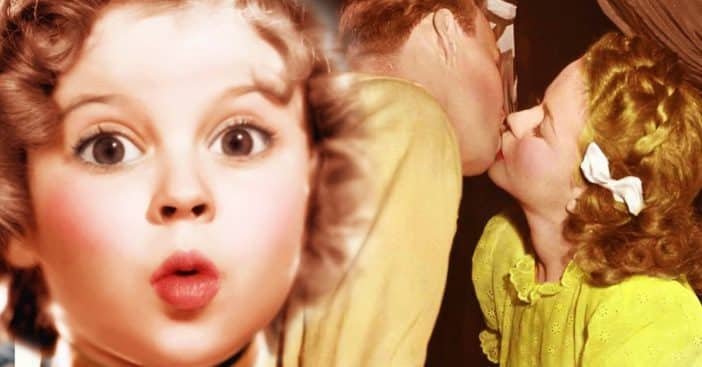
She was the tiniest little superstar, a beacon for a country weighed down with economic turmoil. But Shirley Temple too was often weighed down by extreme expectations, tight work schedules, and no small amount of objectifying. Yet the child star bravely wore a smile for the cameras. But let’s find out who Shirley Temple was when the cameras stopped rolling, a story that Temple’s own recollections can fill in.
Let’s board the not so Good Ship Lollipop and explore the darker side of the life and career of Shirley Temple. Thankfully, it’s not all bad, and this immortal starlet rose above it all and still did very remarkable things. But without further ado, let’s jump back in time!
Upbringing
Shirley Temple was born on April 23, 1928, in Santa Monica, California. As it is with all child stars, her mother fully embraced the arts. At just three, Shirley began dance lessons and cultivated her singing and acting skills. Her mom, Gertrude, had once dreamed of stardom and was determined to see her daughter in the limelight. Her mom began styling the young girl’s hair with those iconic gold ringlets.
RELATED: 12 Facts About Shirley Temple That Show Her Resilience In A Tragic Life
Temple was a bit shy at first, hiding behind the piano at the studio. But even timid and peaking around the piano, she still caught the attention of an Educational Pictures casting director. Soon, she had a contract and began her acting career with Baby Burlesks, comedy shorts satirizing the latest film and TV trends, starring a bunch of kids.
And the dark side of show business began creeping in right there: a bunch of kids in diapers performing subject matter that could get dicey. Shirley said in her autobiography that the skits “occasionally were racist and sexist,” further saying it was, quote, “a cynical exploitation of our childish innocence.”
In the short film Polly Tix in Washington, it’s heavily implied Temple’s character is an analog for a prostitute strutting into the baby senator’s office after fussing over her appearance and jewelry, and the two exchange kisses. Now, we know today the rights and safety of children are supposed to be carefully protected, So, what happened here?
Context is key
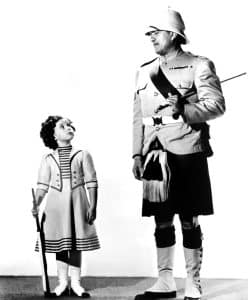
It was a different world when Shirley Temple rose to fame. For one thing, film was pretty new, and so was any work associated with it. History calls this the Pre-Code Era of Hollywood, before the birth of the Hayes Code, which set up some conservative guidelines for what could be filmed. So, this cool, new medium started as the lawless West for filmmakers.
That wasn’t the only reason audiences accepted whatever they were shown. Temple was born on the eve of the Great Depression. Unemployment, crazy prices, not to mention a huge blow to morale – and just after we had wrapped up a devastating war overseas. People were united in chronic depression. Then in danced Shirley Temple, a literal bright spot in one of our darkest hours, who could sing a smile onto even the grumpiest face. Her films played out what Americans wanted to happen for them, some infectious joy to turn their pessimism around.
Wouldn’t you know it, life imitated art, and she reinvigorated a nation, reminding everyone of childhood innocence and, most importantly, hope.
The story of Shirley Temple’s upbringing was not very forgiving
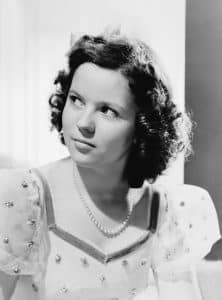
Before workplace safety was at the front of our minds, the staff of these shorts had some shocking ways of disciplining the young actors. Most infamous was the six-by-six soundproof black box nicknamed the “punishment box.” Oh, but it wasn’t completely empty: it had a seat. But that seat was a big chunk of ice the kids had to sit on while reflecting on their behavior. When Temple complained to her mom about the icy punishment, she was told to stop making it up. That’s cold.
Temple was pretty familiar with hard work. She was expected to work after a foot injury, and the day after she had ear surgery. The result? Among Temple’s 40-plus films, 12 of them were done in 1934 alone. Temple remembers the guy in charge, Charles Lamont, saying, “This isn’t playtime, kids, it’s work.” So Shirley took playtime when she could, usually after filming for the day, and was a total tomboy, climbing trees and playing Cops and Robbers. A little childhood respite for a full-time child actress.
Her name in lights, her face on everything
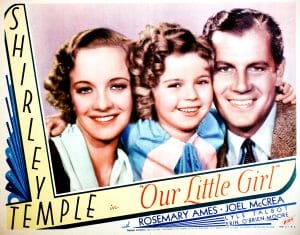
Wherever Temple worked, her career thrived – 20th Century Fox, Universal, Warner Bros., you name it. Though, contract disputes actually kept her from nabbing the role of Dorothy in The Wizard of Oz. As America climbed out of the Depression, Temple became the face of hope and appeared in advertisements 20 times over, per day, not to mention dolls, clothing, and even dishes. There were toys, movie posters, and even look-alike contests. She got the economy moving so much, Temple has been called a one-man, or one-kid, economic relief program.
She got plenty of industry accolades too. To this day, she’s the youngest Oscar Winner, thanks to a 1935 Juvenile Academy Award, not for any one role in particular but for her contribution to the arts. They made the award a smaller version, a fact Temple didn’t actually appreciate.
The rumor mill
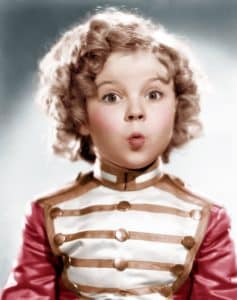
Everybody’s a critic, even when the star is a child. There were all sorts of myths and rumors – probably the biggest was that Temple wasn’t a child at all, but an adult with dwarfism. People rudely pointed to her stocky frame as proof. Even the Vatican sent someone out to confirm she was a child. In a sense, you could argue she was treated as an adult, but all that responsibility was on a kid’s shoulders.
Okay, but what about her teeth? Why wasn’t she ever seen missing any? Well, she did lose teeth, pretty frequently, like all kids. But she either kept her mouth closed or danced to distract from it. She also wore dental caps to hide the gaps. As a kid.

People even went after her hair and called it a wig, even though it was widely reported about her mother meticulously styling her ‘do’, into a style called Pin Curls, made up of exactly 56 curls, in case you wanna go as Shirley for Halloween.
She became the namesake of a hairstyle, dance moves, and even a drink. As legend has it, Temple was at the Brown Derby restaurant when served this drink, nonalcoholic and delicious, and so her own beverage was born. Apparently, she didn’t actually like it but hey, countless children thank her for this creation, which makes going out to restaurants exciting.
Then there was one woman’s accusation that Temple stole her daughter’s soul and the only way to free it was to kill Shirley Temple. Now, that sounds like a wild Quentin Taratino movie or something. Security even caught the woman raising a gun at Temple on stage. Close call.
Unwanted attention
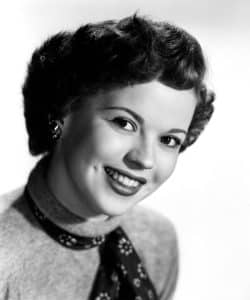
As a movie star, Temple crossed paths with a lot of sleazy types. When she was just 12 and joined MGM, she was called into a meeting with studio producer Arthur Freed. A private meeting. Freed reportedly undid his zipper and told the pre-teen, “I have something made just for you.” The youngster’s response was a nervous laugh, and she was dismissed. Absolutely horrid behavior.
Sadly, this wasn’t a one-off. At 17, she got similar treatment from David Selznick. Sure enough in a meeting, he went over to her side of the desk and grabbed her. He locked the door and it was Shirley’s agility as a dancer that helped her keep distance between the two.
Another producer approached her and told her sex is like water; if you want some, get some. Temple would add another claim that comedian George Jessel groped her and tried to lift her skirt until she kicked him in the groin.
Financial follies
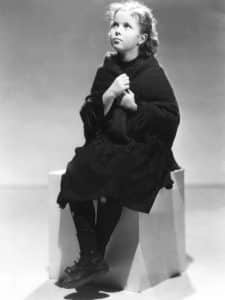
Flourishing against the backdrop of a recovering America, Shirley Temple earned $3 million by the time she was 14. That’s over $30 million after accounting for inflation. On top of that, she helped the then-bankrupt 20th Century Fox repair its financial outlook. But once she reached adulthood, only $44,000 was still in her bank account.
So what went wrong? Good ole dad, who didn’t put all that money into a court-ordered trust fund. When she found out, Temple says she felt, quote, “neither disappointment nor anger,” a reaction she knew not many would understand.
Child Star: in her own words
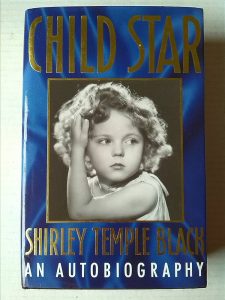
Shirley Temple shaped an era and was as much a product of her time as she influenced it. Her reign can feel pretty distant, however, but we can learn all about her experiences in her own words thanks to the 1988 autobiography Child Star.
Over 500 pages of intimate account of Temple’s unique life. Get ready for a lot of emotional talk about Bill Robinson, her scene partner in The Littlest Rebel. Together, their friendship defied racial divides. Sadly Robinson was treated unfairly by the rest of the crew, but for Temple, he was the best friend she could hope for, who taught her to dance by listening instead of looking, and his encouragement gets its due attention.
Readers compare it to sitting down for a talk with Temple, exposed to her remarkably upbeat and enduring attitude in the face of exploitation, abuse, and a childhood turned upside down. Even with her gone, Temple’s children continue to tell her story too.
Horrific husband and health
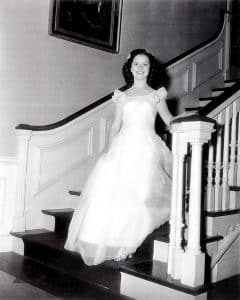
When she was 17, Temple married film and TV actor John Agar, and in 1948, she became a mom to daughter Linda Susan. But she was actually married into a dangerous situation because Agar turned out to be a violent alcoholic. He cheated on her and even when she was still a teen, he abused her. By ‘49, the two divorced and Temple won custody of Linda.
Next year, when she was 22, Temple’s acting career ended.
Temple would find stable ground outside the hype of Hollywood, But first, trouble found her again when she ended up diagnosed with cancer. Even in this battle, Temple broke major ground and helped change how we do things.
Polly Tix again
There was no room for a grown-up Temple on the silver screen. Roles were already slowing before she bowed out. But that was fine. She still had big dreams and set out to achieve every one of them.
Some things just aren’t meant to be. Her first marriage fell apart, But finally, she and businessman Charles Black dated for barely two weeks before getting married, and would stay married for 55 years. The biggest kick? Black had never seen a single one of her films!
Now armed with a new name, Shirley Temple Black tread some semi-familiar ground: politics. Yep, as a child star, Temple was often invited into very important places with very important people, including J. Edgar Hoover and Eleanor Roosevelt. Temple, now with two more children, had an unsuccessful bid for Congress but also caught President Nixon’s attention, paving Temple’s way to the United Nations’ General Assembly. There, she drew attention to the needs of aging Americans, the environment, and refugees.
Then, in ‘74, she became Ambassador to Ghana. She helped teach other ambassadors before transitioning to Ambassador of Czechoslovakia. She would be the first woman to earn that title, which was considered the elite job for career diplomats.
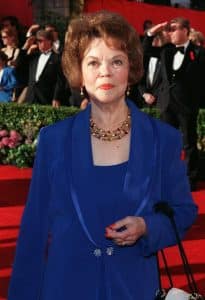
Around this time, Temple was diagnosed with breast cancer. She had to undergo a mastectomy. Back then, cancer was talked about in hushed tones. Of course, Temple defied that trend and went public. This ended up helping others breach the sensitive topic, the first big step in normalizing important health conversations that are essential for early detection. Temple also helped give women a voice in their own health, since back then, doctors called a lot of the shots over the patients. All in a day’s work. No wonder she called the personal rewards of public service great.
Temple did not go totally unaffected by her unusual upbringing. She said the punishment box taught her time is money and, quote, “Wasted time means wasted money means trouble.”
Her childhood earned a price tag others benefitted from and she ran the risk of violence from colleagues and fans alike. She nearly lost everything. But Temple rose higher than most and defied everything we came to expect from child stars. The childhood icon passed away in 2014 at the age of 85, but she never stopped helping, after acting, even after all her public service; she taught us that we can always be better, that we can put good into this world and have something to be proud of when the day is done. Who could have imagined one little three-year-old wouldn’t just charm us, she’d teach us all along the way?
What a life … . An actress, a diplomat, and far too briefly a kid. So let’s toast to Mrs. Temple.
What was your favorite project of hers? Did she get any of you into tap dancing? Get in the comments and share all your Shirley memories. The past is full of real stories like hers that are more remarkable than fiction, and we aim to cover them all for you.
